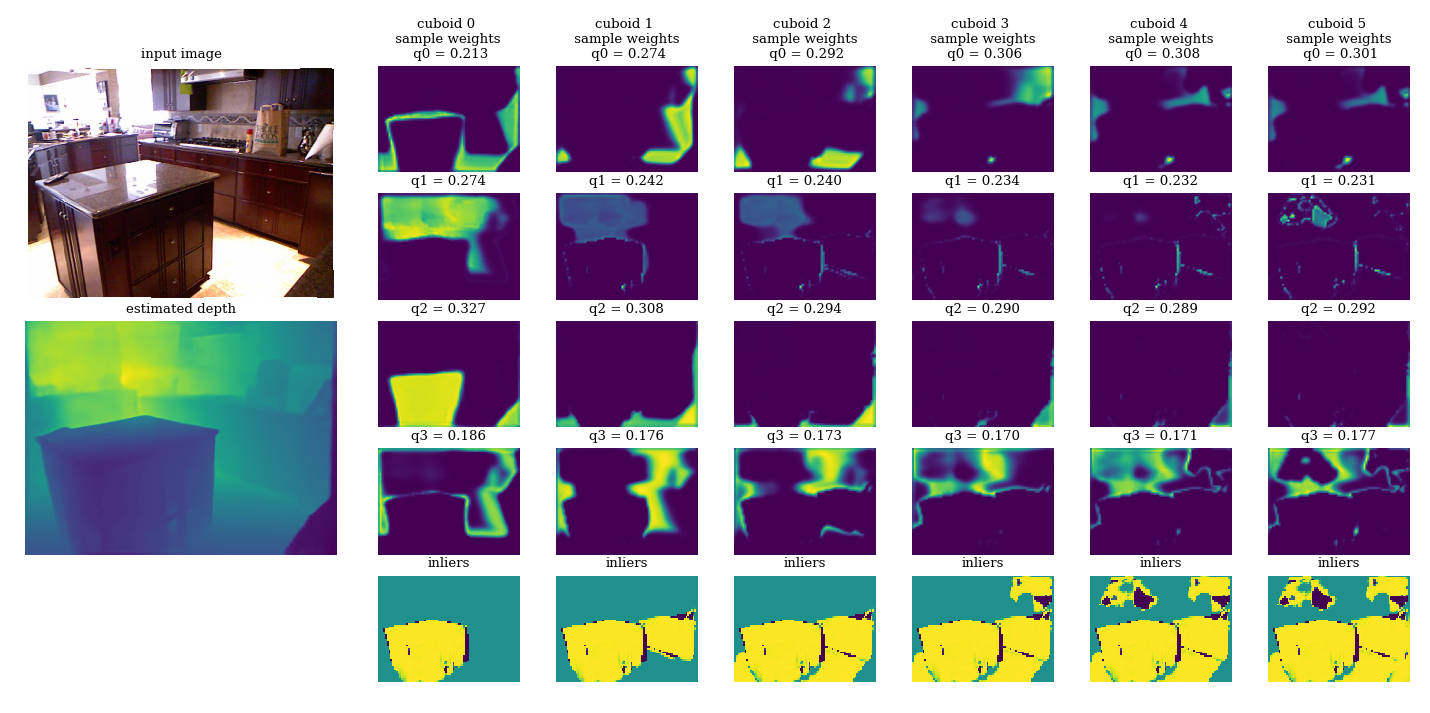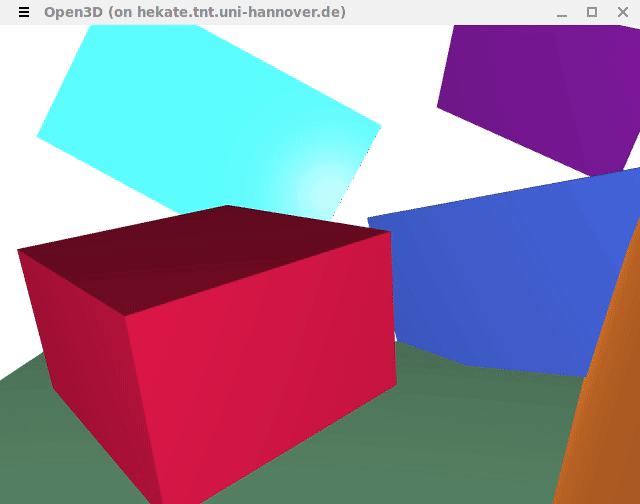UPDATE (2024/03/18):
An extended version of our work has been accepted for publication in Transactions on Pattern Analysis and Machine Intelligence (PAMI):
Robust Shape Fitting for 3D Scene Abstraction
The correspondingly extended source code will be published here soon.
If you use this code, please cite our paper:
@inproceedings{kluger2021cuboids,
title={Cuboids Revisited: Learning Robust 3D Shape Fitting to Single RGB Images},
author={Kluger, Florian and Ackermann, Hanno and Brachmann, Eric and Yang, Michael Ying and Rosenhahn, Bodo},
booktitle={Proceedings of the IEEE Conference on Computer Vision and Pattern Recognition (CVPR)},
year={2021}
}
For depth estimation, we utilise BTS. If you do as well, please also cite their paper:
@article{lee2019big,
title={From big to small: Multi-scale local planar guidance for monocular depth estimation},
author={Lee, Jin Han and Han, Myung-Kyu and Ko, Dong Wook and Suh, Il Hong},
journal={arXiv preprint arXiv:1907.10326},
year={2019}
}
Get the code:
git clone --recurse-submodules https://github.com/fkluger/cuboids_revisited.git
cd cuboids_revisited
git submodule update --init --recursive
Set up the Python environment using Anaconda:
conda env create -f environment.yml
source activate cuboids_revisited
Install the patched torchgeometry lib:
cd util/torchgeometry
python setup.py install
cd ../..
In order to use the NYU Depth v2 dataset, you need to obtain the original MAT-file and convert it to a version 7 MAT-file in MATLAB so that we can load it via scipy:
load('nyu_depth_v2_labeled.mat')
save('nyu_depth_v2_labeled.v7.mat','-v7')
Then, extract all images and depth maps to separate Pickle files using our helper script:
python util/extract_nyu_to_files.py --source nyu_depth_v2_labeled.v7.mat --destination ./datasets/nyu_depth/files
Download our pre-trained models, which we used for the experiments in our paper from
here and place the files in the models directory.
If you want to train our method for RGB input, please also obtain the pre-trained weights for the BTS depth estimator
from here and place them in
the models folder as well.
We provide a demo script which performs cuboid fitting on any user provided RGB image. By default, an example from NYUv2 is used:
python demo.py --gpu GPU_ID
Two windows should appear. One shows the image, estimated depth, estimated sampling weights, and inlier maps per cuboid:
The second window provides a rendering of the extracted cuboids:
If you use your own images, you need to provide intrinsic camera parameters: focal length and principal point.
python demo.py --image_path PATH --gpu GPU_ID \
-f FOCAL_LENGTH -cx PRINCIPAL_POINT_X -cy PRINCIPAL_POINT_Y
In order to repeat the main experiments from our paper using pre-trained neural networks, you can simply run the following commands:
python evaluate.py --load ./models/consac_weights.net
This will run our method for depth input on the NYU test set with the parameters used in the paper and report all evaluation metrics at the end.
python evaluate.py --depth_model bts --load ./models/consac_weights.net
By default, all computations run on the CPU. You can decide which parts of the pipeline shall be executed on which GPU.
Depth estimation (GPU recommended):
--depth_gpu GPU_ID
Sampling weight estimation:
--consac_gpu GPU_ID
Cuboid fitting (CPU recommended if you have a lot of cores, GPU will be slower, but your mileage may vary):
--consac_gpu GPU_ID
Inlier counting:
--inlier_gpu GPU_ID
If you set GPUID = -1 (default value), the CPU will be used.
Add the option --visualise to get a plot of sampling weights and inliers for each image.
python train.py --train_consac --normalise_depth --hyps 32 --consac_gpu GPU_ID --inlier_gpu GPU_ID --fitting_gpu GPU_ID
This will only train the sampling weight estimation network for (ground truth) depth input.
By default, the final network weights will be saved as ./results/train/session_***_gt/consac_weights_best.net.
Replace GPU_ID with the ID of your GPU, e.g. 0.
python train.py --depth_model bts --train_depth --bn_on_input --hyps 32 \
--depth_gpu GPU_ID --consac_gpu GPU_ID --inlier_gpu GPU_ID --fitting_gpu GPU_ID \
--load_depth ./models/bts_nyu_v2_pytorch_densenet161/model
This will fine-tune the depth estimation network while using our pre-trained sampling weight estimator.
You can change the path to the pre-trained weights using the --load PATH option.
If you want to fine-tune the sampling weight estimator as well, add --train_consac.
By default, the final network weights of the depth estimator will be saved as ./results/train/session_***_bts/depth_weights_best.net.
You may want to use a separate GPU for --depth_gpu, as the whole pipeline does not fit on a single GPU with 12GB memory.


